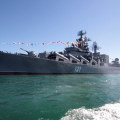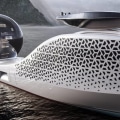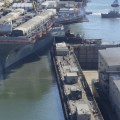In terms of energy production for a major spacecraft, solar energy alone is not enough. The Cassini mission would have needed 1400 KG of solar panels, plus more mass in unreliable batteries and thermal energy, compared to the 168 kg of its Radioisotope Thermoelectric Generator (RTG). Experts say that the US needs to invest more in nuclear-powered spacecraft if it wants to remain competitive with nations like China. During a government hearing on Wednesday (October), it was compared with other nations when it comes to developing new nuclear propulsion technology.
And, according to them, the US needs to move quickly if it wants to keep up. The congressional committee hearing, called Accelerating Deep Space Travel with Space Nuclear Propulsion, took place before the US House of Representatives Committee on Science, Space and Technology. NASA has previously discussed how nuclear propulsion technology could allow the agency to send humans to Mars faster than through the use of traditional chemical rockets. There are several types of nuclear propulsion that could be used in space technology.
With nuclear electric propulsion, the thermal energy of a nuclear reactor is converted into electrical energy that powers any type of electric thruster or propulsion technology used by a spacecraft. With thermal nuclear propulsion, reactors heat propellants like hydrogen and then the gas from that reaction is expelled, creating thrust. This can create much more thrust than electric propulsion systems.According to experts at Wednesday's hearing, if NASA wants to get to Mars soon, time is pressing. If the United States is serious about leading a human mission to Mars, we have no time to waste, said US Rep.
Don Beyer (D-Va). Beyer added that in recent years, Congress has continued to fund the development of nuclear space technology at NASA with the aim of conducting a future flight test in space. Nuclear fission derives energy from the division of atomic nuclei, while nuclear fusion does so by binding them together, releasing energy in the process. Webinar participants heard about systems that can use both fission and fusion for spacecraft propulsion, extraterrestrial surface power and energy for spacecraft systems. Rockets taking off from Earth will depend on chemical fuels for the foreseeable future. However, once in orbit, nuclear engines could take control and provide propulsion to accelerate spacecraft through space.
Nuclear propulsion includes a wide variety of propulsion methods that use some form of nuclear reaction as the primary energy source. The idea of using nuclear material for propulsion dates back to the beginning of the 20th century. In 1903, it was hypothesized that radioactive material, radium, could be a suitable fuel for engines to power cars, planes and ships. Wells picked up this idea in his 1914 work of fiction The World Set Free. NASA would also need to design the spacecraft to protect astronauts from the nuclear reactor itself; this could be done by using advanced materials to protect them from radiation or placing homes as far away from it as possible. During the Cold War, the United States and the Soviet Union conducted research on nuclear-powered aircraft, since they would presumably allow a country to keep nuclear bombers in the air for extremely long periods of time - a useful tactic for nuclear deterrence. Advances in both nuclear fission and fusion will be indispensable for deep space travel; they agreed, also noting that nuclear energy could supply electricity for onboard systems and instrumentation, and fuel a sustained human presence in the celestial bodies of the solar system. He also explained that a Direct Fusion Drive (DFD) could have advantages due to its small size and need for very little fuel: a few kilograms could power a spacecraft for ten years. In addition to thrust, spacecraft need electrical power to maintain life support systems, communications and other hardware.
When talking about “powering” a spacecraft, this can refer to either propulsion or power for onboard systems. Nuclear Thermal Propulsion (NTP) systems are more powerful and twice as efficient as chemical rocket engines; meaning they can produce twice the thrust of a chemical rocket using the same amount of propellant. The future of space exploration lies in nuclear power; it is clear that this technology will be essential if we want to explore deep space faster and more efficiently than ever before. With its potential for high-thrust propulsion and long-term power generation capabilities, nuclear power is an invaluable asset for any mission beyond Earth's orbit.



